Welcome to Natural Wonders, where recently I wondered why sourwood trees are so twisty. Earlier this week I encountered the above sourwood branch bent back and fused to itself. It reminds me of the Magical Dragon Tree up on the Blue Ridge Parkway in the Shining Rock Wilderness:
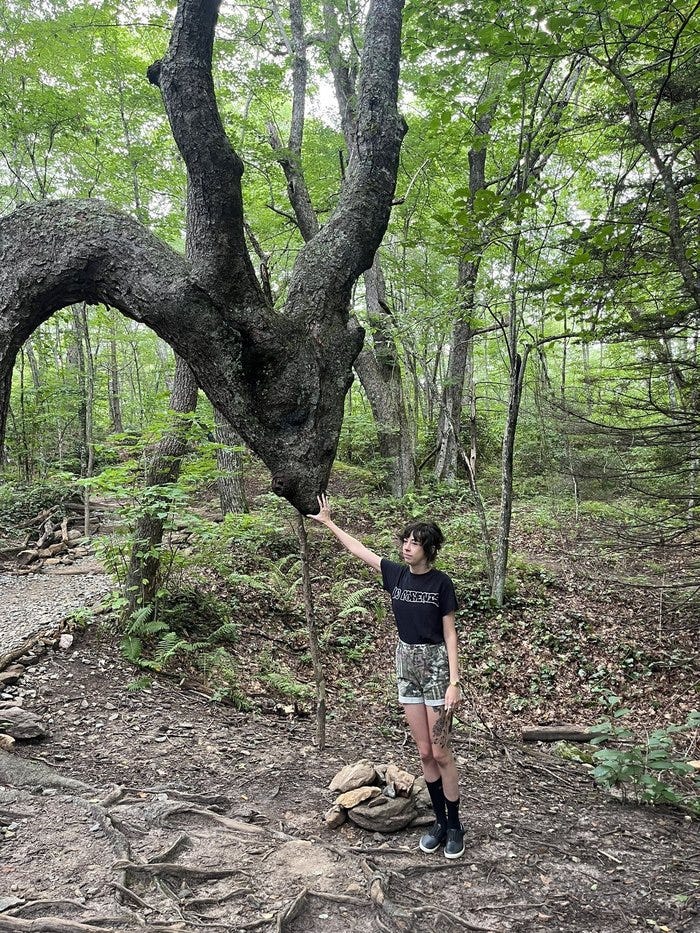
Wintertime has always been one of my favorite times to hike in the woods. With the leaves gone, the forest opens up and reveals the lay of the land underneath. Rippling outlines of old roadbeds, hidden rock cliffs, the flank of a taller mountain descending from the military buzzcut of its upper ridgeline…the forest is quiet and calm and revealing in the cold.
The shapes of trees are revealed as well. The crooked sourwoods are outlined against the sky, but it’s also during wintertime that I more easily notice the smooth bulging trunks of some white oaks. For several years now I’ve collected photographs of these odd, pregnant-looking trees:
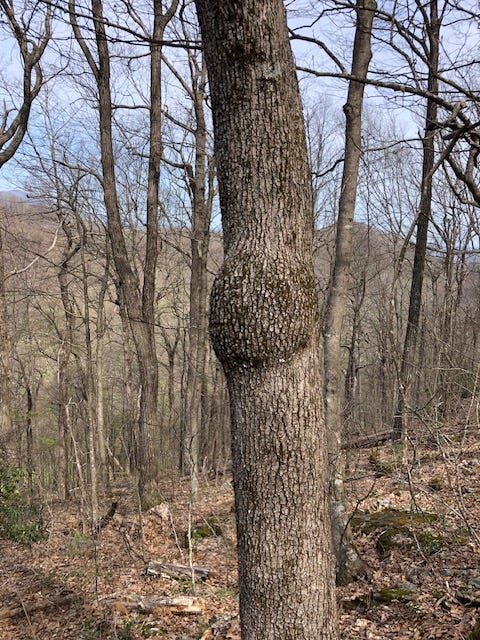
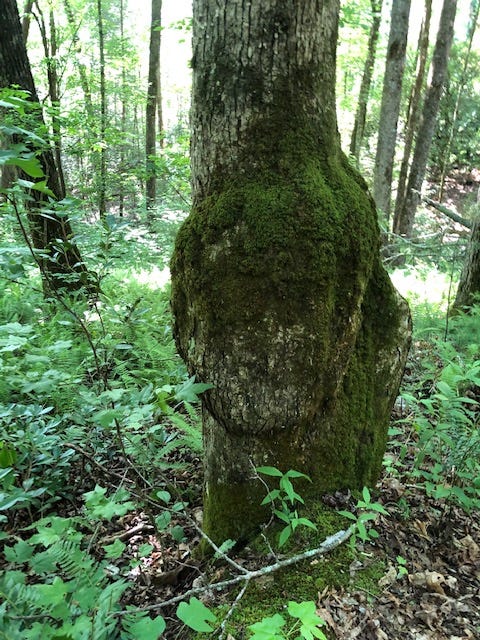
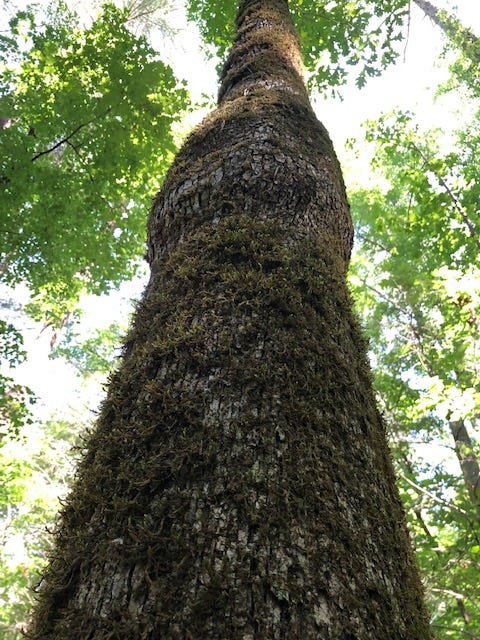
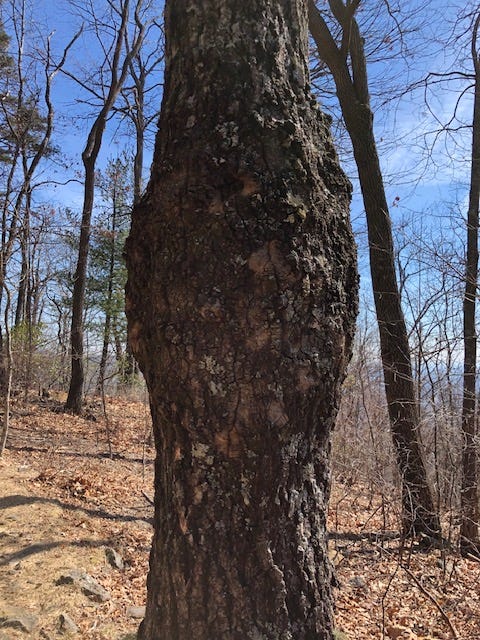
What’s happening inside these trees to cause this hourglass shape?
Recently, I heard from my friend Stan about an interesting find inside a maple tree:
Stan cut this otherwise healthy-looking tree as part of a “daylighting operation,” when foresters remove some trees to allow sunlight to penetrate to more of the forest floor. The picture above was the resulting stump, revealing this gorgeous design within.
What mysteries hide within a tree?
First, Stan’s mysterious find.
This star-shaped growth almost looks like a tree inside a tree, as if a gnarled old craggy tree was subsumed and enveloped by the soft wood of a younger tree. Actually, almost the reverse happened. This maple tree was invaded by a fungus that grew and spread, creating a discoloring called spalting. Woodworkers love to find it – furniture and turned bowls with spalted wood make for beautiful designs:
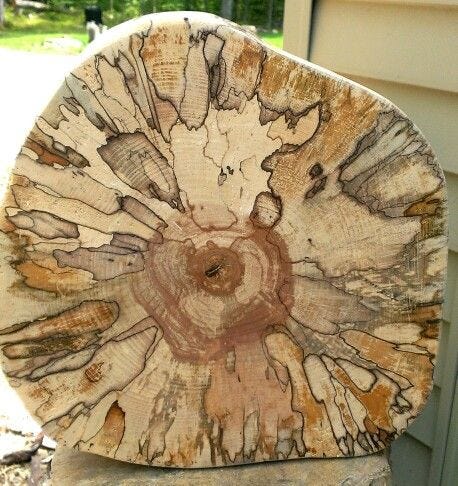
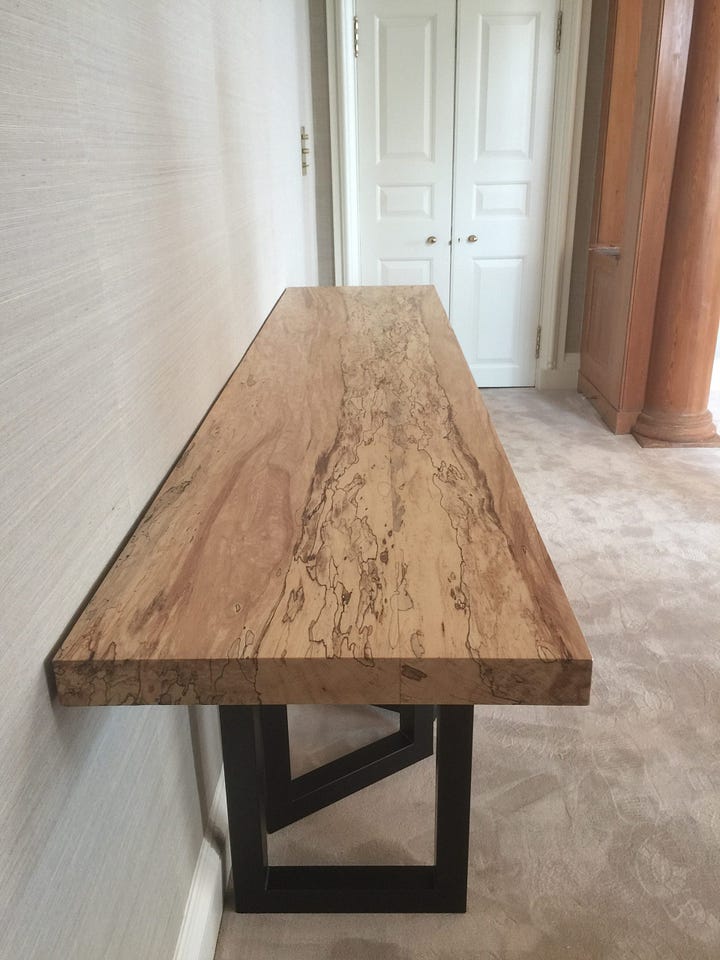
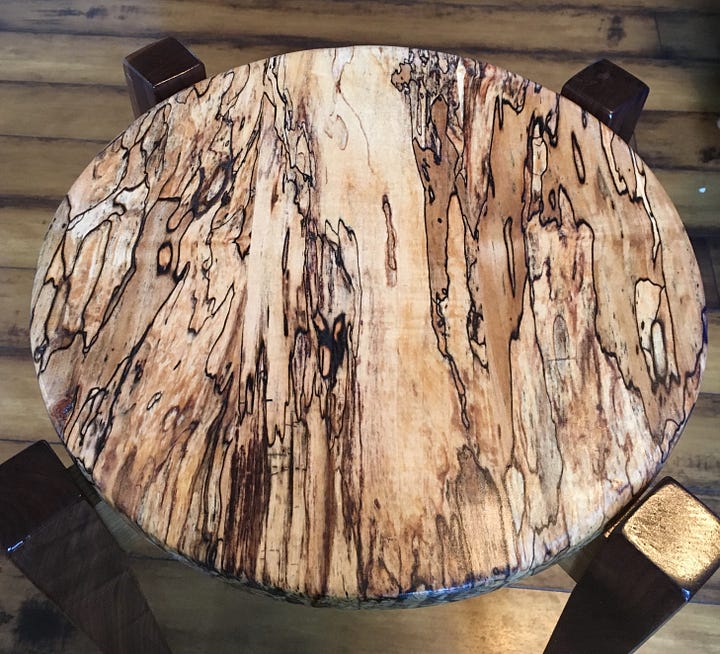
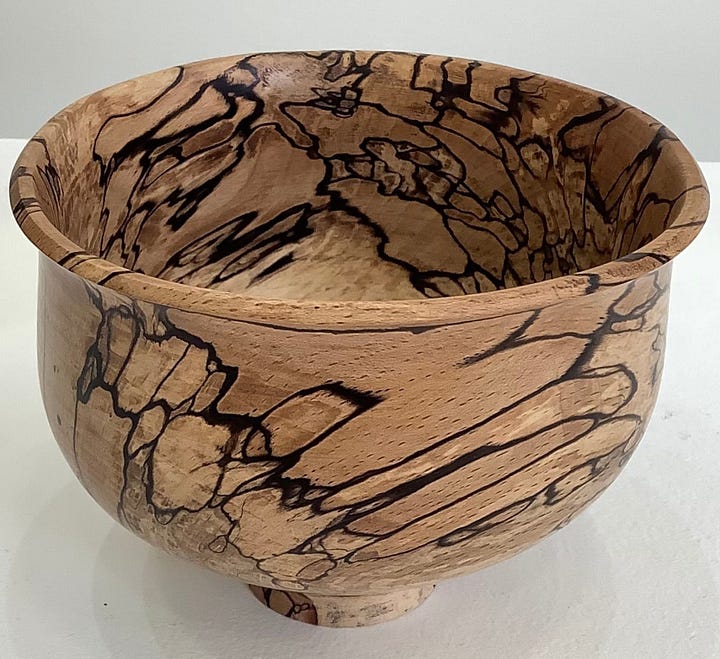
There are three types of spalting: pigmentation, zone lines, and white rot. In Stan’s piece of wood, the fungus has created a red pigmentation surrounded by darker zone lines delineating the infiltration zones of the fungus.
Spalting usually happens when fungus invades trees that have already fallen in the woods, however it can occur in a living but stressed tree, which is what seems to have happened with Stan’s specimen. For years, woodworkers and furniture makers relied on luck to find this desired spalting in the trees they harvested, but now science has discovered a way to commercially manage the process. Lumber companies can carefully introduce fungus to their trees, then wait 2-3 years before harvesting them to see the results. I imagine it’s a bit like Christmas morning, seeing the designs inside the wood, since we humans can’t control the routes or patterns the fungi make, but only start the process and hope for the best.
Fungi can be beneficial for trees and serve as an underground web connecting trees with each other in order to share resources. But they can also be damaging, particularly when they enter a tree through an injury in the bark and make their way into the heartwood of the tree. If the bark of a tree is damaged, say by a glancing blow from a falling tree nearby, the damaged tree races to heal itself before fungi can make its way too deep inside. And by “racing” I mean it grows new bark over the injured spot at a rate of 1/3 inch per year. Small injuries will hopefully heal within 5 years, but larger injuries can spell eventual death for a tree. Which brings us to the pregnant trees…
Almost two years ago I wrote about large, lumpy tree growths and whether they indicated a tree had cancer:
Does this tree have cancer?
Oftentimes when I walk in the woods, I come across trees with enormous lumps on them that look like tumors: It doesn’t seem to happen to just one species or size of tree:
HOWEVER!
I have a correction to make to that previous story. I did not make a clear enough distinction between a tree burl and a tree gall.
A gall on the trunk (AKA bole) of a tree is a large, warty, bumpy growth made up of knots and ingrown bark. Because of this, galls are not desirable on trees in a managed forest – they make it hard to load and process trees, and their wood can be pithy, rotten or bug-riddled. Some galls are solid enough to use for turning bowls, but they may also crumble apart. Many of the growths that I called “burls” in my earlier story are actually galls.
Tree burls on the other hand, are swellings underneath smooth bark. These are the pregnant trees I’ve taken note of, but they can also get quite large. The main distinguishing feature is the smooth outer bark with a rounded, “swelled” appearance. Underneath, the wood grain can be contorted and quite beautiful:

Both galls and burls are the result of excessive cell division in response to some type of damage – fungus, bacteria, or insect invasion. What looks on the outside like an abnormality or damage is actually quite beautiful within.
Weird Nature:
Click to view:


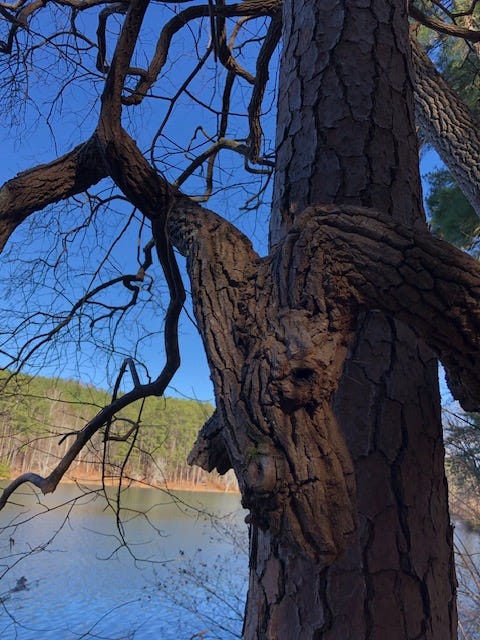
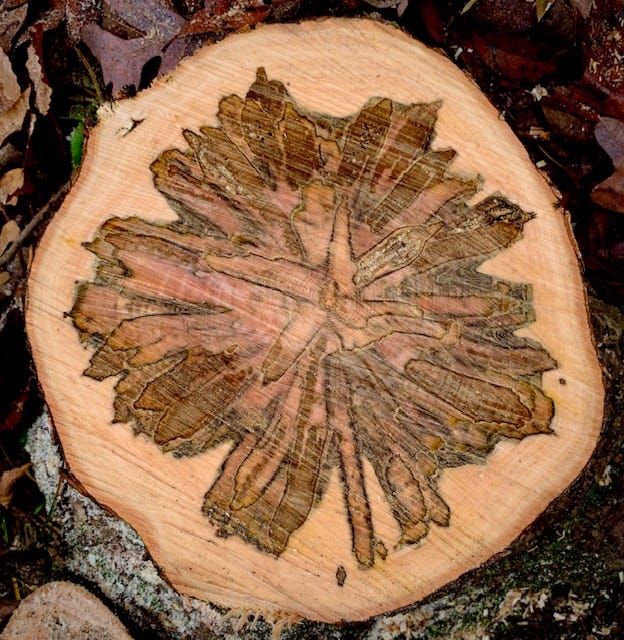
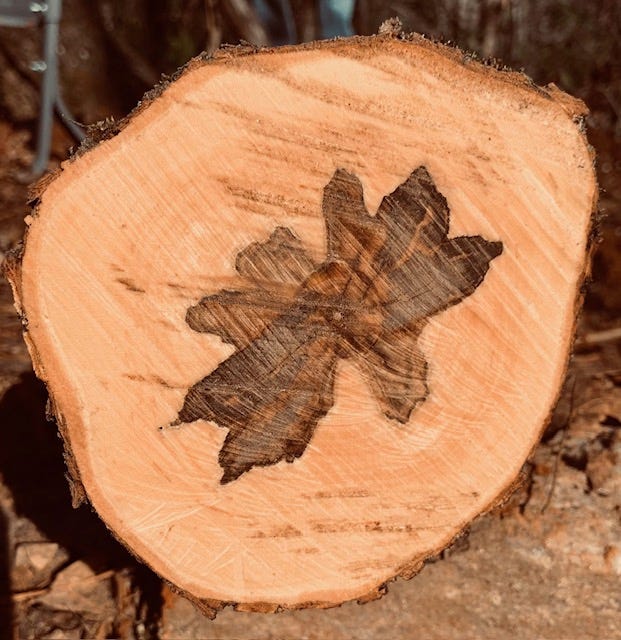
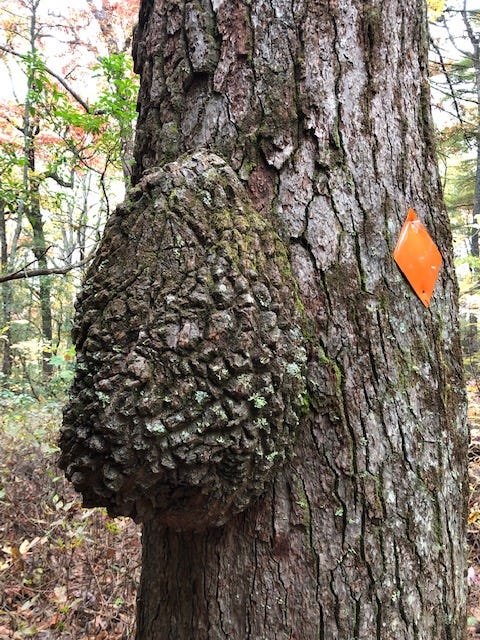
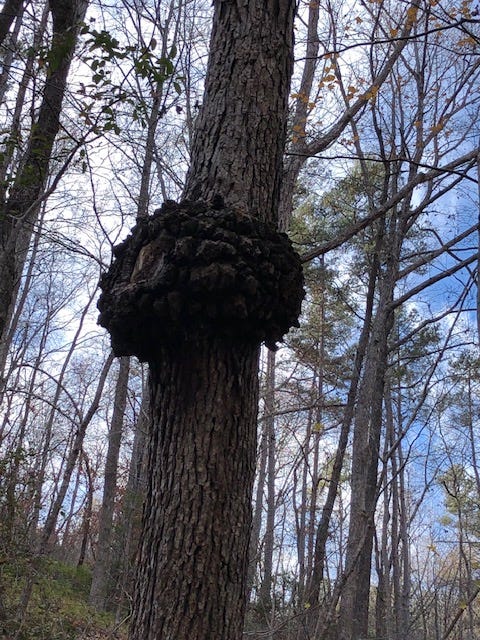

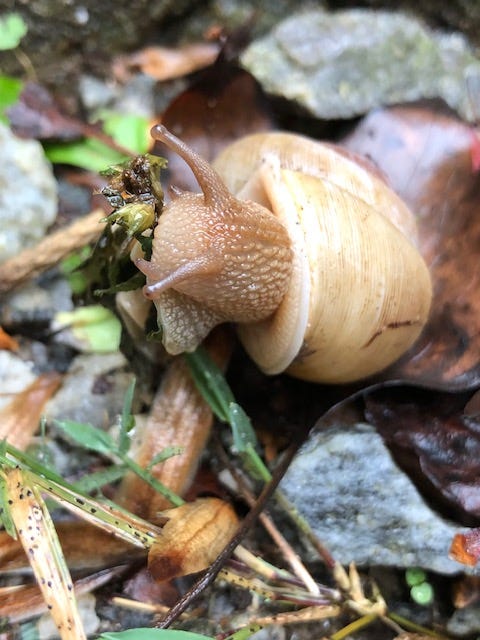
Wow, I never heard of spalting. It's beautiful.
Fine essay. You're a very good writer.